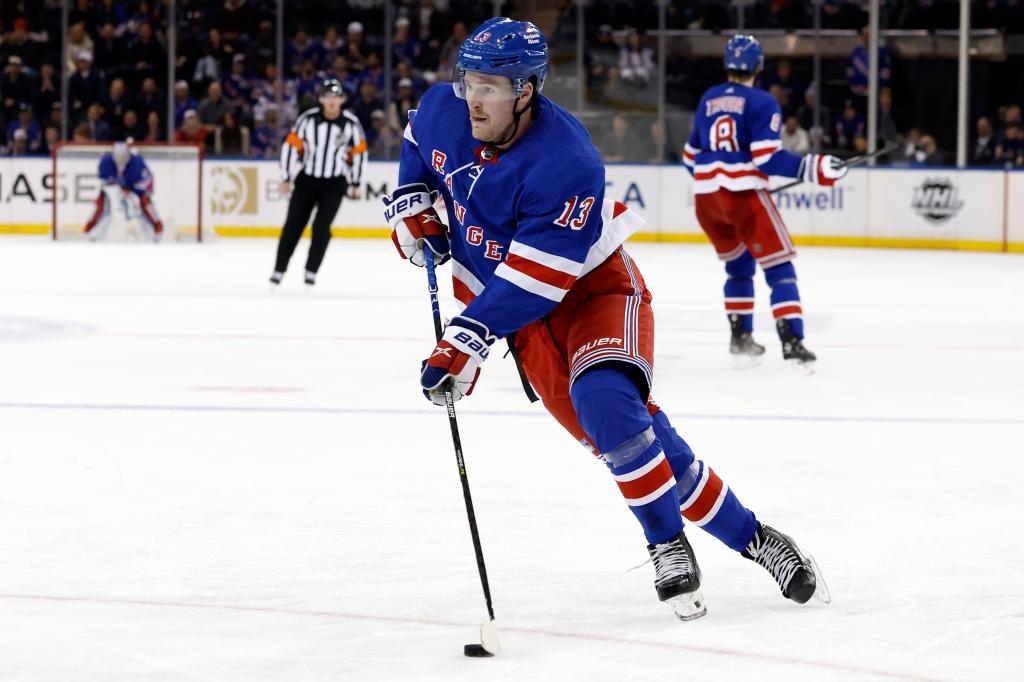When three-on-three overtime was introduced to the NHL in the 2015-16 season, it was helter-skelter, it was chaotic and it was spectacular.
“Oh, me and Kaner were wheeling,” Artemi Panarin said with a huge smile on his face in referencing then-Chicago teammate Patrick Kane. “Two-on-one…two-on-one…two-on-one.
“It’s not like that anymore.”
It’s not like that around the NHL anymore after coaches and players alike recognized that possession was paramount.
Teams have stopped attacking at all costs, often bringing the puck back outside the zone to keep possession while making changes on the fly, for lack of a better term. Teams now circle back into their own end in order to retain possession.
It’s a risk-reward game now. Teams minimize risks. They minimize shot attempts.
The Wild, for instance, have played 13:07 of three-on-three this season in which there have been just 19 attempted shots.
Overtime often turns into five minutes of tedium.
That was not the intention. As a result, the league will examine potential rule changes to elevate the entertainment quotient of three-on-three.
The topic received significant attention at the GM meetings in Toronto on Tuesday. Coaches and players will be asked for their input before the GMs convene again in March.
“Unintended consequences are always considered with these things,” NHL VP of Hockey Operations Colin Campbell said. “We could put a shot clock in there, but we don’t want to stop playing [for violations]. We don’t want to have more faceoffs.”
Read and react
The Rangers have played four overtime games. They have won two playing three-on-three. Two games have gone to a shootout — they have won one and lost one in a shootout.
Coincidentally, the club did a substantial amount of three-on-three work during Wednesday’s practice, still three days away from their next game in New Jersey.
“I wouldn’t even know how to take [regrouping] out of the game,” head coach Peter Laviolette said. “Everything is about possession, getting the puck and then trying to hang onto it.
“With possession, you can score goals. But a lot of goals come off of some sort of transition. You have possession, you’re pressing and all of a sudden someone’s coming back the other way on an odd-man rush either on a breakaway or a two-on-one.
“As far as our group goes, just like everything else, we try to have some sort of a plan. It’s never perfect because hockey is such a fluid game. In some sports, you can go out 30 feet, turn to the left and there’s a play there to be made. That’s not the way hockey is sometimes.
“It’s more you have to read-and-react off the defenses, and I think it’s the same way with three-on-three. It is something we talk about and try to have systems and an identity with it.”
Including specialty-team play (power plays are four-on-three in OT), K’Andre Miller leads the team in ice time with 8:41. Mika Zibanejad leads the forwards with 7:53. Vincent Trocheck checks in next at 6:22, six seconds more than Panarin. No. 16 has taken one shot on two attempts, the second blocked.
“If I’m out there playing with Bread [Panarin], I know what his mindset is, he’s trying to attack and create a chance,” Trocheck said. “But there’s a strategy once nothing is being created.
“Obviously, it’s hard to score, so if nothing is happening and there is a lull for a bit you have to make sure you don’t let them get the change and are able to get the change yourselves. That way you’re fresh and can create a little bit of a mismatch.”
The Rangers have amassed a total of four shots in their four overtime games, being outshot 14-4 overall and 9-4 at three-on-three. They have been out-attempted 22-9 in 14:51 of three-on-three.
Want to catch a game? Tickets for all upcoming Rangers games can be found here.
Quality, not quantity
The numbers do not concern Trocheck.
“That’s another thing: Possession is so key that you don’t want to waste a shot,” the center said. “If I’m taking a shot from outside that Grade-A area, it’s kind of almost wasted and a change of possession.
“I don’t think the number of shots is necessarily irrelevant. Obviously, you’ve got to shoot in order to score, but you have to be careful with your shot selection. The goalies are so good, let’s face it, I’m not beating a goalie from the top of the circles without a screen, so if I take that shot, he just gloves it and they’re going the other way.”
It is always easier to obstruct than create. The NHL wants excitement. Players and coaches want two points.
“I don’t know what to change, but if there is an idea that [creates] more scoring chances and goals, that’s always great,” Panarin said. “It’s great for business, for fans, and for everything.
“I don’t know what they would recommend to do that, but it would be great to see more scoring chances. Maybe we should play one-on-one.
“And you could score on both sides.”
Source









